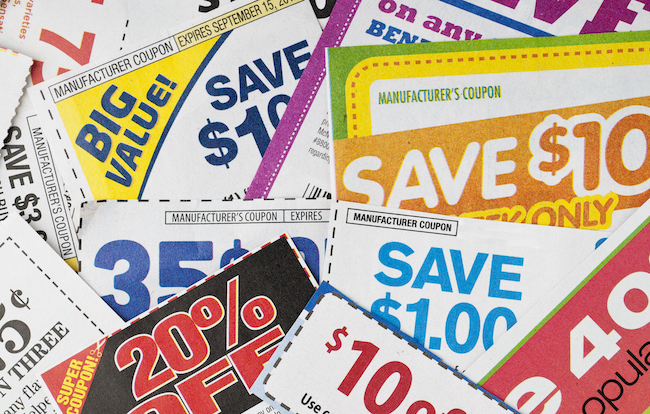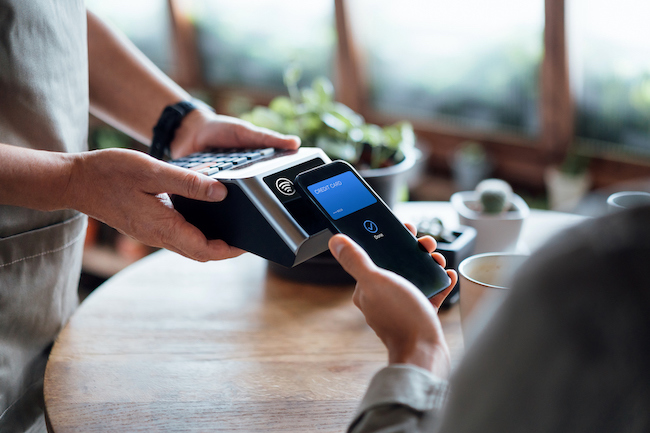••• health care research
Time for a (virtual) checkup
Patients prioritize health care convenience
 If the pandemic impacted anything, it's the awareness we have of our general wellness and health care habits. As everyone settles into a new normal, the way health care is approached and viewed is starting to stabilize. The 2022 CVS Health Care Insights Study found that on average, people care about their health just as much or more than they did before the pandemic.
If the pandemic impacted anything, it's the awareness we have of our general wellness and health care habits. As everyone settles into a new normal, the way health care is approached and viewed is starting to stabilize. The 2022 CVS Health Care Insights Study found that on average, people care about their health just as much or more than they did before the pandemic.
People are staying on top of their checkups, health screenings and their relationships with their primary care physicians. Many are also taking advantage of the increasing virtual visitation options.
Patients are pursuing higher engagement levels with their doctors, seeking in-depth conversations about their health and advice on how to improve it. Eighty-one percent of those surveyed by CVS want their primary care providers to be aware of their satisfaction and overall happiness with life. Eighty-one percent also want their providers to understand their stress levels and how they cope with difficult situations and 80% say it is important for providers to be aware of their health goals.
Although people want to communicate more with their primary physicians, some are still uneasy when discussing mental health concerns. Eleven percent indicate they’re embarrassed or ashamed to get mental health help and 10% believe the services available don't benefit them and they wouldn't use them. Fifty-seven percent of health care providers surveyed say proper access to mental health professionals would be very helpful to their patients and 48% always or often refer patients to professionals to achieve health goals. In fact, 40% of physicians believe that mental health services are very helpful and, if needed, they would use them and 26% find them helpful and have used the services themselves.
Virtual visits became the go-to throughout the pandemic and today they are seen as the most convenient option. Ninety-two percent of people say convenience is an important factor when choosing a health care provider. When comparing in-person and virtual visits, 41% believe going virtual is more convenient because they don't have to leave the house, 37% say they save time and 37% say they don't have to cover transportation costs. Understanding the preference for virtual options, 54% of providers added virtual capabilities, 43% added mobile capabilities and 42% added online portals. Fifty-three percent of providers say adding a virtual option increased the number of patient visits, 93% believe patients are more likely to make appointments virtually and 88% believe patients are more likely to keep virtual appointments.
Whether consulting virtually or in-person, trust levels have increased between patient and provider. Fifty-nine percent indicate that their primary care physician is the provider they trust most, 22% say their pharmacist trust levels have increased and 27% indicate that their trust levels towards nurses have increased. Forty-three percent indicate having a greater appreciation for health care providers.
The CVS Health Care Insights Study was fielded by research firm Market Measurement. The survey was conducted with 1,000 U.S. participants 18 years and older and 400 health care providers.
••• shopper insights
Back at a healthy clip
Americans (re)turn to couponing as prices rise
 As inflation has soared, many Americans have turned to couponing to save money, according to a study conducted by U.S. News & World Report, with 58% of Americans surveyed saying they search for coupons at least once a week and 25% search monthly.
As inflation has soared, many Americans have turned to couponing to save money, according to a study conducted by U.S. News & World Report, with 58% of Americans surveyed saying they search for coupons at least once a week and 25% search monthly.
Whether it be to gain tips or inspiration, 51% of respondents indicated that they follow blogs and social media accounts dedicated to couponing. Of those, 87% have used the advice they see on the accounts. Twenty-seven percent follow at least one Facebook page dedicated to couponing and 30% follow at least one couponing blog. Twelve percent follow TikTok couponing accounts and 15% follow accounts on Instagram.
Many respondents use digital coupons both online and in-store. Seventy-six percent indicated that they have searched for coupons online while grocery shopping to take advantage of exclusive in-app coupons or deals on grocers’ websites.
Ninety-one percent of couponers who use browser extensions, apps or couponing sites say they have saved money on their purchases. Seventy-six percent of those respondents have at least one coupon browser extension installed and 44% regularly use their preferred couponing sites, apps and browser extensions.
Consumers use various couponing methods for in-person and online purchases. Sixty-seven percent prefer promotional codes that offer online purchase discounts and 54% sought coupons for free shipping. Fifty-eight percent are interested in buy-one-get-one coupons and 58% say they use rebate offers.
When asked about holiday spending this year, many Americans indicated they would adjust their spending habits. Fifty-two percent are expecting to spend less on holiday gifts. Fifty-one percent are planning to use couponing apps, websites and browser extensions to reduce the amount spent. Respondents indicate that on top of couponing they will be shopping on Black Friday and Cyber Monday to help decrease the total amount they spend.
This survey was conducted among 2,002 U.S. adults ages 18 and older by U.S. News & World Report in July 2022.
••• customer service research
‘Please hold’
How long is too long for customer-support calls?
 Picture this: You purchase a product and after the first use, it breaks. You hop on a customer support call to see what can be done. This scenario can go one of two ways: you either get the situation promptly handled or, if you’re like most Americans, according to data from a survey conducted by call-center platform provider TCN and OnePoll, you're put on hold for an average of 14.6 minutes before speaking to a representative.
Picture this: You purchase a product and after the first use, it breaks. You hop on a customer support call to see what can be done. This scenario can go one of two ways: you either get the situation promptly handled or, if you’re like most Americans, according to data from a survey conducted by call-center platform provider TCN and OnePoll, you're put on hold for an average of 14.6 minutes before speaking to a representative.
When asked in the survey how long they were willing to wait to reach the customer service department, 35% answered five to seven minutes, 31% two to four minutes, 16% six to 10 minutes, 9% 11 minutes or longer and 9% were not willing to wait over two minutes. Twenty-six percent of callers have been placed on hold for six to 10 minutes and 25% have waited 11-15 minutes. These answers are not too shocking, given the above-cited average wait time, but 15% of respondents have waited 16-20 minutes and 11% have been on hold for 31 minutes or longer.
Although respondents dread the long hold times, 49% prefer to speak to a live agent by phone and 45% prefer to chat online with a live agent. Live agents can quickly address the problem yet 45% of respondents prefer to reach out via e-mail, 29% use automated phone service options, 27% use company text features, 22% use company chatbots and 20% prefer social media platforms to initiate a conversation.
Customers have opinions on what makes a good customer service agent. Fifty-two percent indicated that an agent should be able to solve their issue, 41% want them to be knowledgeable about the product or service and 39% believe agents should have authority to make decisions, which, in theory at least should reduce call lengths and speed call resolution. Customers prefer agents who can handle their issues while having welcoming qualities: 44% want an agent to be willing to help; 36% want them to be pleasant to speak to; and 32% want compassionate agents.
Fifty percent of Americans responded that their greatest frustration when calling a customer service department is the fear that their call will disconnect after a long hold time. Other frustrations include having to speak to several departments or people about the issue before it gets resolved (45%), dealing with an agent who is unable to solve the issue (41%), the time it takes to resolve the issue (37%) and when the issue remains unresolved (36%).
If customers have a good experience with a company, 55% would write an online review and 71% are likely to endorse the brands they’ve had positive interactions with. When customers receive a poor customer service experience, however, 27% are very likely and 39% are somewhat likely to abandon the brand.
The survey was conducted by TNC and OnePoll with 1,000 U.S. adults between May 12-16, 2022.
••• shopper insights
Move over, Christmas
Events like Black Friday gaining holiday-like status for shoppers
 While holidays like Christmas or Halloween are seasonal events that are popular with shoppers, commercial events like Black Friday and Cyber Monday are climbing the sales charts. According to research by YouGov, Christmas is the most shopped-for seasonal event (57%), followed by Mother’s Day/Father’s Day (26%) and Black Friday/Cyber Monday (25%).
While holidays like Christmas or Halloween are seasonal events that are popular with shoppers, commercial events like Black Friday and Cyber Monday are climbing the sales charts. According to research by YouGov, Christmas is the most shopped-for seasonal event (57%), followed by Mother’s Day/Father’s Day (26%) and Black Friday/Cyber Monday (25%).
Christmas is shopped most by Great Britain (76%), Spain (74%) and Poland (73%). Mexico (39%), Great Britain (35%) and Poland (34%) are the top three countries that shop for Mother’s Day and Father’s Day. Black Friday and Cyber Monday are dominated by Spain (41%), Italy (40%) and Singapore (32%).
When making purchases, 51% of Mother’s Day and Father’s Day shoppers plan one to three weeks in advance and 32% prepare the week before. Sixty-five percent of Christmas shoppers plan two to three weeks in advance and 41% prepare at least a month before. Over 20% of Black Friday or Cyber Monday customers prepare two to three days in advance and just over 20% plan the day before or the day of.
On Mother’s Day and Father’s Day, 74% of consumers purchase food/drink items, 70% buy confectionary items and 67% make clothing, shoe and accessory purchases. Eighty-seven percent of Black Friday or Cyber Monday shoppers purchase clothes, shoes and accessories, 62% buy electronics and 60% purchase cosmetics/toiletries.
Younger consumers are more likely to shop on Black Friday or Cyber Monday compared to consumers 55+. Nearly 30% of people ages 18-24 and 30% of 25-34-year-olds participated in either sale event last year while only 18% of consumers 55 years or older made purchases.
Although online purchases are convenient, most consumers prefer to shop in-store for seasonal events. Thirty-eight percent shop mainly in-store for clothes/shoes/accessories, 49% for jewelry/watches/luxury items, 47% for cosmetics/toiletries, 45% shop for household appliances and 46% for household goods. Thirty-eight percent of consumers say they gain shopping inspiration by browsing stores, 26% through social media, 25% through family or friend recommendations, 23% through brand websites and 15% through TV advertising.
Who are these seasonal shoppers buying for? Not surprisingly, 64% of Mother’s Day or Father’s Day purchases are for parents or for a partner’s parents. Purchases are also made for neighbors, friends and other relatives. Forty-one percent of Christmas shoppers are purchasing items for relatives, about 45% are shopping for children and over 40% are shopping for their partners. The majority of Black Friday or Cyber Monday shoppers are making purchases for themselves (68%) but are also shopping for their partners and parents.
The survey was conducted in 18 markets including Great Britain, Indonesia, Germany, France, Mexico, Italy and the United States.
••• financial services research
Convenience vs. security
Cashless payment options lead to safety concerns

We are entering a cashless era where it is increasingly common to rely more on a cell phone’s digital wallet and payment apps like Venmo or PayPal than a physical one. According to a Pew Research Center survey, Americans are interested in the convenience of digital payments but are aware of the potential dangers: What if you forget your password? What happens if someone logs into your account? What if these apps are not as secure as they claim to be?
Seventy-six percent of Americans use at least one of the four apps or sites within the study (PayPal, Venmo, Cash App or Zelle). PayPal, the most popular digital payment method, is used by 57% of Americans. Sixty-three percent of 18-29-year-olds, 66% of 30-49-year-olds and 55% of 50-64-year-olds use the service. PayPal is followed by Venmo, which is used most by the younger generations. The service is used by 57% of people ages 18-29 and 49% of people 30-49. Thirty-eight percent of U.S. adults use Venmo, 36% use Zelle and 26% use Cash App as alternative forms of payment.
Sixty-one percent of Americans who use these payment methods say it makes purchasing products easier. Forty-seven percent use the services to send money to people safely and 34% use them because others use them. Forty-four percent of the youngest age group, ages 18-29, use payment sites or apps to split expenses with others. This is a less common reason for 30-49-year-olds (23%) and those 50+ (7%).
Although many users rely on these apps or sites, they are still aware of the dangers they can bring. A higher percentage of older Americans are warier of using cashless options. Seventy-one percent of respondents 50+ are not interested in alternative payment methods, 64% say they don't need them, 20% don't know how to use them and 66% don’t trust them with their money.
When asked about safety, people aged 18-49 felt slightly safer with payment apps than those 50+. Twenty-two percent of them feel that their information is extremely safe, 47% think it is somewhat safe and 31% say it is a little or not safe at all. Seventeen percent of users aged 50+ think their information is extremely safe, 44% say it's somewhat safe and 39% say it is a little or not safe at all. Overall, 46% of users think their information is somewhat safe. Digital payment apps and sites try to protect personal information but many users still fear being hacked or falling victim to scams. Thirteen percent of U.S. adults have been scammed and 11% have had their account hacked.
This survey was conducted by the Pew Research Center with 6,034 U.S. adults from July 5-17, 2022. The results included 4,996 respondents from the Center’s American Trends Panel and 1,038 respondents from Ipsos’ KnowledgePanel.
